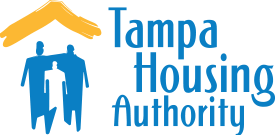HUD Closes Rental Assistance Demonstration Conversion Transaction with the Housing Authority of the City of Tampa, Florida to Build 196 Deeply Affordable Rental Homes
Part of large-scale redevelopment master plan in the West River neighborhood that will feature a total of 670 homes.
WASHINGTON - The U.S. Department of Housing and Urban Development's Office of Multifamily Housing on April 14closed a Rental Assistance Demonstration (RAD) transaction with the Housing Authority of the City of Tampa (THA) in Tampa, Florida, to replace 97 public housing units and create an additional 99 affordable homes for a total of 196 homes at the Canopy at West River community. This will double the amount of assisted housing that existed prior to the RAD transaction.
Canopy at West River Phase I is a new construction family project to be located in one seven-story high-rise building and one five-story midrise building on approximately 3.2 acres located in Tampa's West River neighborhood. Residents of the new development will have on-site amenities, including garage parking, elevators, a laundry room, a fitness center, a game room and a community room. Additionally, this building will be outfitted with high-speed broadband access and will incorporate green and energy-efficient features.
Through its non-profit affiliate, THA has been in the process of transforming the West River neighborhood into an area with mixed-income housing, retail and office space, community services, as well as open space and parks. As part of this multiphase plan on the 44-acre site, THA has already completed several other conversions through RAD, totaling 506 permanently affordable RAD Section 8 homes and 110 other affordable homes. Upon completion of all the Housing Authority's North Boulevard transactions, this site will feature 670 RAD units in total. This transformation is expected to bring a new vitality to the West River neighborhood.
The RAD transaction includes a construction budget of $46.9 million ($239,000 per unit) fully financed through:
- 4% Low-Income Housing Tax Credits
- Community Development Block Grant (CDBG) Funding
- Commercial First Mortgage Loan
About RAD
RAD was designed to help address the multi-billion-dollar nationwide backlog of deferred maintenance in the public housing portfolio and to stem the loss of affordable housing that could no longer be kept to decent standards. From the program's inception through February 1, 2022, the Rental Assistance Demonstration has facilitated more than $13.5 billion in capital investment to improve or replace nearly 175,000 deeply rent-assisted homes, most of which house extremely low-income families, seniors, and persons with disabilities.
Under RAD, converted homes are moved to the Section 8 platform with a long-term contract that, by law, must be renewed in perpetuity. Under Section 8, residents continue to pay 30% of their income towards rent and the housing must continue to serve those with very low and extremely low incomes, as was the case when the property was assisted through the public housing program. Residents must be notified and consulted prior to conversion, are given a right to return to assisted housing post-construction so that the same tenants can enjoy these newly preserved and improved apartments, and maintain the same fundamental rights they had as public housing residents.
RAD Resources
More programmatic information is available on the RAD website. Data on RAD is available at the RAD Resource Desk.
View photo essays and read case studies where RAD is working to successfully preserve and improve public housing for low-income families.
Watch an educational video for public housing residents or those new to the RAD program.



